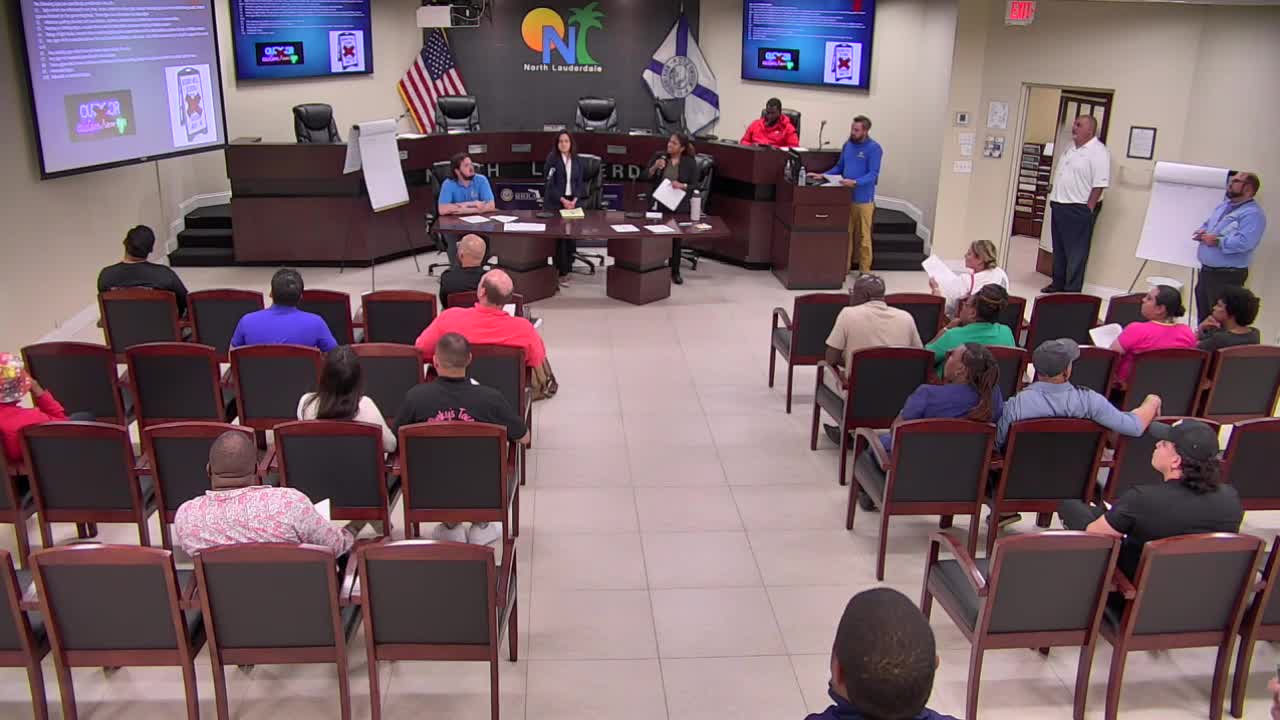City seeks public input on controversial sign regulations
August 19, 2024 | City of North Lauderdale, Broward County, Florida

This article was created by AI summarizing key points discussed. AI makes mistakes, so for full details and context, please refer to the video of the full meeting. Please report any errors so we can fix them. Report an error »

During a recent government meeting, officials engaged with local business owners to discuss potential changes to signage regulations within the city. The focus was primarily on the types of signs currently prohibited, including animated signs and sidewalk sandwich signs, and whether these should be reconsidered.
Participants were encouraged to share their thoughts on the existing code, particularly regarding signs that could enhance visibility for businesses without obstructing pedestrian pathways. A consensus emerged that sidewalk sandwich signs could be permitted as long as they do not impede foot traffic or violate ADA accessibility standards. The discussion highlighted the importance of these signs in attracting customers, especially in busy commercial areas.
Additionally, the meeting addressed concerns about the placement of trash cans in plazas and their impact on signage visibility. Business owners suggested that the number of trash cans should be balanced with available space for signs, emphasizing the need for clear pathways for pedestrians.
The conversation also touched on customizable neon signs, with one business owner advocating for more lenient regulations, citing advancements in technology since the original code was established in 1991. Officials acknowledged the need to revisit these rules to reflect contemporary practices while ensuring safety and compliance with fire regulations.
City attorney representatives clarified that while the city has the authority to regulate signage for public safety, it must also respect First Amendment rights, which complicates the regulation of sign content. This legal framework aims to prevent clutter in public spaces while maintaining a fair environment for all businesses.
As the meeting concluded, officials committed to compiling the feedback received and presenting it to the commission for further consideration. The outcome of these discussions could lead to significant changes in the city’s signage regulations, potentially benefiting local businesses and enhancing the overall aesthetic of commercial areas.
Participants were encouraged to share their thoughts on the existing code, particularly regarding signs that could enhance visibility for businesses without obstructing pedestrian pathways. A consensus emerged that sidewalk sandwich signs could be permitted as long as they do not impede foot traffic or violate ADA accessibility standards. The discussion highlighted the importance of these signs in attracting customers, especially in busy commercial areas.
Additionally, the meeting addressed concerns about the placement of trash cans in plazas and their impact on signage visibility. Business owners suggested that the number of trash cans should be balanced with available space for signs, emphasizing the need for clear pathways for pedestrians.
The conversation also touched on customizable neon signs, with one business owner advocating for more lenient regulations, citing advancements in technology since the original code was established in 1991. Officials acknowledged the need to revisit these rules to reflect contemporary practices while ensuring safety and compliance with fire regulations.
City attorney representatives clarified that while the city has the authority to regulate signage for public safety, it must also respect First Amendment rights, which complicates the regulation of sign content. This legal framework aims to prevent clutter in public spaces while maintaining a fair environment for all businesses.
As the meeting concluded, officials committed to compiling the feedback received and presenting it to the commission for further consideration. The outcome of these discussions could lead to significant changes in the city’s signage regulations, potentially benefiting local businesses and enhancing the overall aesthetic of commercial areas.
View full meeting
This article is based on a recent meeting—watch the full video and explore the complete transcript for deeper insights into the discussion.
View full meeting